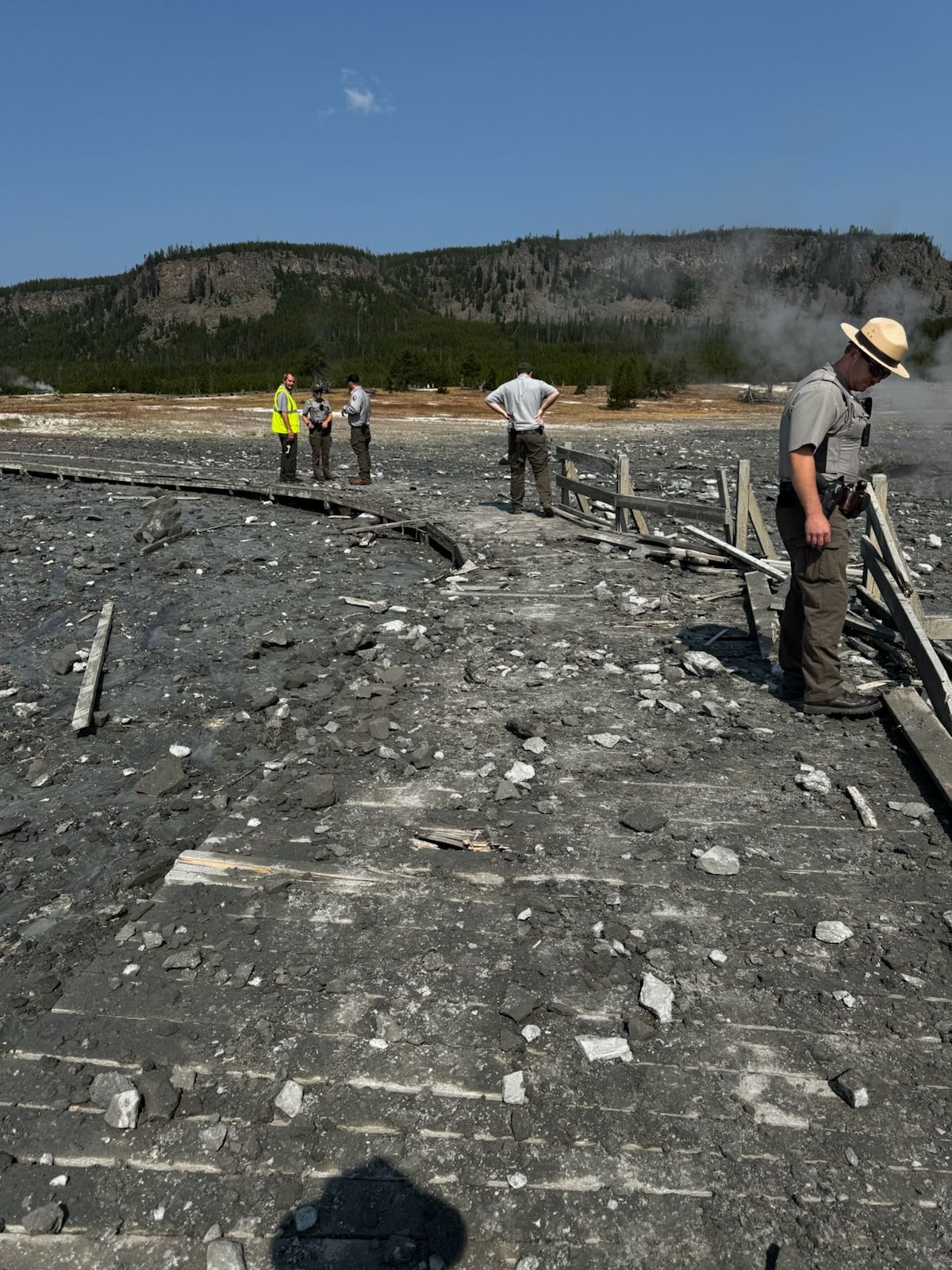Hydrothermal explosion rocks visitors near Old Faithful in Yellowstone

A “very powerful geyser eruption” in the Biscuit Basin thermal area of Yellowstone National Park has resulted in a closure to the site, located only minutes from Old Faithful Geyser.
“This is an unappreciated hazard” in Yellowstone that has nothing to do with magma from the Yellowstone volcano, according to Michael Poland, scientist in charge of the Yellowstone Volcano Observatory (YVO).
The YVO provides long-term monitoring of volcanic and earthquake activity in the Yellowstone region.
“Today’s explosion does not reflect activity within the volcanic system, which remains at normal background levels of activity,” the Park Service noted in a press release. “Hydrothermal explosions like that of today are not a sign of impending volcanic eruptions, and they are not caused by magma rising towards the surface.”
A video posted on Facebook by Los Angeles resident Vlada March and others showed the eruption occurring around 10 a.m. on July 23, blasting black material an estimated 90 feet into the sky as tourists in the foreground at first watch in amazement before fleeing down a boardwalk in fear.
A large plume of steam then appears to rise even higher and spread across the Upper Geyser Basin.
A separate video shows people walking back along the boardwalk that appeared damaged in places and littered with rock spewed out by the explosion.
Poland called it a “small explosion,” possibly of Black Diamond Pool, because the eruption doesn’t appear to have left a large crater.
Black Diamond’s average temperature is more than 148 degrees.
The pool, according to the park’s website, “erupted black murky water after an earthquake in July 2006, with several explosive eruptions in the following days. Eruptions continue to be infrequent since, with the last eruption observed in 2016.”
A similar event also occurred in Biscuit Basin on May 17, 2009, Poland noted. In 1989, Porkchop Geyser in the Norris Geyser Basin exploded, tossing rock more than 200 feet.
“Typically they’re short events,” Poland said, prompted by a drastic change in the feature’s plumbing.
“Hydrothermal explosions occur when water suddenly flashes to steam underground, and they are relatively common in Yellowstone,” the Park Service noted in a press release.
Poland said earthquakes can also cause such explosions, such as a series following the 1959 Hebgen quake. But seismometers in the area did not show any such activity during the July 23 eruption.